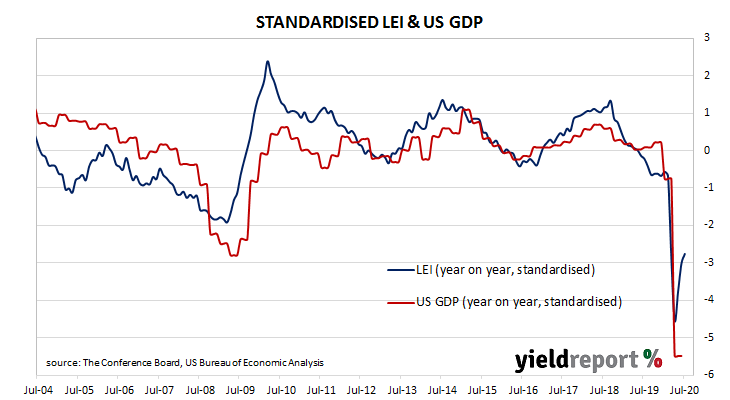Summary: US leading index increases for the third consecutive month; increase more than expected; initial post-pandemic recovery “losing steam”.
The Conference Board Leading Economic Index (LEI) is a composite index composed of ten sub-indices which are thought to be sensitive to changes in the US economy. The Conference Board describes it as an index which attempts to signal growth peaks and troughs; turning points in the index have historically occurred prior to changes in aggregate economic activity. Readings from March and April signalled “a deep US recession” but more recent readings indicate the worst has passed.
The latest reading of the LEI indicates it rose by 1.4% in July. The result was slightly more than the 1.0% increase which had been generally expected but less than half of June’s 3.0% after it was revised up from 2.0%. On an annual basis, the LEI growth rate increased from June’s revised figure of -8.1% to -7.2%.
“Despite the recent gains in the LEI, which remain fairly broad-based, the initial post-pandemic recovery appears to be losing steam. The LEI suggests that the pace of economic growth will weaken substantially during the final months of 2020,” said Ataman Ozyildirim, Senior Director of Economic Research at The Conference Board.
Changes over time can be large but once they are standardised, a clearer relationship with GDP emerges. The latest reading implies a year-on-year growth rate of -2.2% in October.
Long-term US Treasury bond yields finished lower. By the end of the day, the 2-year yield had inched up 1bp to 0.15% while 10-year and 30-year yields each finished 3bps lower at 0.65% and 1.39% respectively.
In terms of US Fed policy, expectations of any change in the federal funds rate over the next 12 months retained a slight easing bias. OIS contracts for September implied an effective federal funds rate of around 0.07%, about 2bps below the current spot rate.

